 Written by Susan Griffitts, MSN, RN, FCN
Written by Susan Griffitts, MSN, RN, FCN
As people age, the risk of falling becomes increasingly common, and falls can have severe consequences for seniors. According to the Centers for Disease Control and Prevention (CDC), falls are the leading cause of fatal and nonfatal injuries among older adults. In fact, one in four Americans aged 65 and older falls each year. This results in more than 3 million emergency department visits and 800,000 hospitalizations, with 300,000 of those hospitalizations due to hip fractures resulting from a fall.
There are various reasons why seniors are more prone to falling. As we age, our vision, balance, and muscle strength decline, making it more challenging to maintain stability and react quickly to prevent falls. Chronic health conditions, such as arthritis, Parkinson's disease, or diabetes, can also increase the risk of falling. Environmental factors, such as uneven surfaces, poor lighting, or cluttered spaces, can also contribute to fall-related injuries.
It is crucial to understand where seniors are most likely to fall to prevent these incidents from occurring. By identifying common fall locations, we can take proactive measures using fall prevention devices to address the underlying issues, such as improving lighting, removing hazards, providing non-slip socks and bed monitors, or installing grab bars, to reduce the risk of falls. This knowledge can also help seniors and their caregivers take steps to stay safe and prevent injuries, allowing them to maintain their independence and quality of life.
Living rooms and bedrooms are often seen as the most common areas where seniors fall, but kitchens, stairs, and bathrooms also pose significant risks. Therefore, it's crucial to take proactive steps to prevent falls and ensure the safety of our older adult population. Simple modifications such as installing handrails, and bed alarms, improving lighting, or removing clutter can significantly reduce the risk of falls and improve the overall safety of their living spaces. By making these minor adjustments, we can help seniors maintain their independence and quality of life while keeping them safe in their homes.
For seniors, preventing falls in the bathroom is of utmost importance. Making bathroom navigation simple and stable is essential since stepping in and out of the tub or shower can be particularly challenging and dangerous. Installing devices in strategic areas for support helps solve this issue.
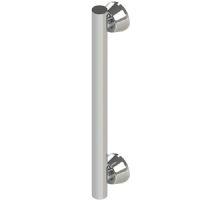 | Linear Grab Bar by Invisia View Product |
Grab bars are an essential tool for preventing falls in the bathroom. They offer additional support and stability when installed near the bathtub, shower, and toilet for easy access and use. They provide a secure handhold for seniors, helping them maintain their balance and reducing the risk of slips and falls. Grab bars are beneficial in the shower as they provide support when reaching for items or moving around in a confined space. They also allow seniors to safely enter and exit the tub, which can be particularly challenging due to the wet and slippery environment. They are easy to install and can be securely mounted to a level that is appropriate for the individual. By incorporating grab bars in the bathroom, we can significantly reduce the risk of falls and improve the safety and well-being of seniors in their homes.
Recommended: Linear Grab Bar by Invisia
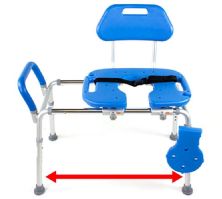 | Premium HydroGlyde Sliding Tub Transfer Bench with Cutout by Platinum Health View Product |
Bath transfer benches are especially helpful for seniors with limited mobility or who may have recently undergone surgery or suffered an injury. They provide a secure and stable seat to sit on while bathing, allowing them to bathe independently and confidently. Bath transfer benches also reduce the risk of falls by eliminating the need to step over the bathtub's edge, which can be challenging and dangerous for seniors.
Recommended: HydroGlyde Sliding Tub Transfer Bench by Platinum Health
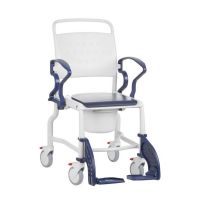 | Bonn Shower Commode Chair with Wheels by Rebotec View Product |
Shower chairs are an excellent tool, particularly for seniors who have difficulty standing for extended periods or are at risk of falling. These chairs provide a secure and stable seat to sit on while showering, allowing seniors to perform necessary activities without worrying about accidents. A shower chair enables seniors to bathe more independently and confidently, reducing the risk of falls and injuries. Shower chairs come in various styles and sizes to accommodate individual needs and preferences. Many come with adjustable height, backrests, and armrests for added comfort and support.
Recommended: Bonn Shower Commode Chair with Wheels by Rebotec
Bathtub safety steps are a helpful modification for preventing falls in the bathroom, especially for seniors who have difficulty stepping in and out of the tub. These steps provide a secure and stable platform, making it easier and safer for seniors. With bathtub safety steps, seniors can reduce the risk of falls and injuries by eliminating the need to step over the tub's edge. Safety steps come in various shapes and sizes to fit the specific needs of the individual and are easy to install in most bathrooms. Additionally, most safety steps come with additional features, such as handrails or non-slip treads, for added stability and support.
Recommended: Step 2 Tub Bathtub Safety Step with Rail
Preventing falls in the bedroom, kitchen, and living room is essential to safeguard the safety and well-being of seniors. Good lighting is crucial in these areas to provide clear visibility and prevent tripping hazards. A study showed that incidents of falls were reduced by 43% by incorporating high-intensity blue-enriched white light during the day and lower intensity during the night. Additionally, strategically placed lamps can help illuminate these spaces and make it easier to navigate furniture and other obstacles.
Another critical step in preventing falls is clearing up clutter. Removing unnecessary clutter and maintaining clear walkways can help reduce the risk of tripping and falling. Furthermore, loose rugs or mats should be securely fastened to the floor to prevent slipping.
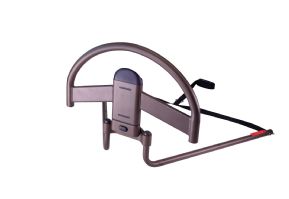 | Bed Rail for Standard and Adjustable Beds - Freedom Click Bed Handle by Stander View Product |
Bed rails can be an excellent tool for fall prevention, providing users with added support when getting in and out of bed. They can help increase independence, reduce the risk of falls, and provide peace of mind for caregivers. However, it's crucial to note that bed rails should not be used as a restraint. Improper use of bed rails can cause harm, such as entrapment or injury. It's essential to follow manufacturer instructions carefully and consult with healthcare professionals to ensure proper use. With the appropriate usage and care, bed rails can be a simple, effective fall prevention solution, promoting users' safety and independence.
Recommended: Bed Rail for Standard and Adjustable Beds - Freedom Click Bed Handle by Stander
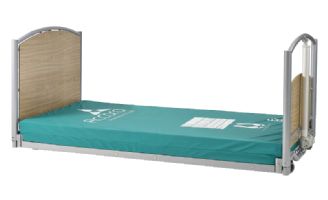 | FloorBed - Floor Level Fall Prevention, Height-Adjustable, Ultra-Low Bed with Bariatric Option by Accora View Product |
Low beds can be a practical solution for fall prevention in the bedroom. Because they sit closer to the ground, they pose less risk of injury from falls. Additionally, low beds make it easier for individuals with mobility issues to get in and out of bed, especially seniors. By choosing a low bed, you can ensure that you or your loved one sleep comfortably while minimizing the risk of falling.
Recommended: FloorBed by Accora, Floor Level Fall Prevention, Height-Adjustable, Ultra-Low Bed with Bariatric Option
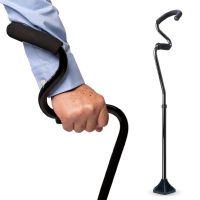 | StrongArm Comfort Cane - Self Standing Support View Product |
Canes and walkers can be invaluable tools for preventing falls in individuals with mobility issues. By providing additional balance and stability, they help reduce the risk of accidents and promote safe movement in larger spaces. These aids can also increase confidence and independence, allowing individuals to carry out their daily activities without fear of falling. With the right cane or walker, seniors can maintain their quality of life while prioritizing safety.
Recommended: StrongArm Self Standing Cane / Support Cane
Preventing falls on stairs is crucial for maintaining safety in the home. Good lighting ensures visibility on the stairs, reducing the risk of trips and falls. Additionally, handrails on both sides of the stairs can provide necessary support and stability, helping individuals maintain balance as they move up and down.
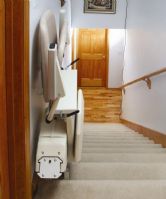 | Pinnacle Premium Straight Stair Lift View Product |
Stairlifts can be an excellent solution for seniors with difficulty navigating stairs, especially for those at high risk of falling. With a stairlift, seniors can move up and down stairs safely and efficiently, virtually eliminating the fall risk. Stairlifts provide a sense of security and give the user a great deal of independence and comfort.
Recommended: Pinnacle Premium Straight Stair Lift
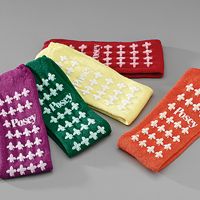 | Posey Fall Management Socks View Product |
Non-skid socks are an effective tool for fall prevention, especially for individuals at risk of slipping or losing their balance. These socks have special treads on the bottom that prevent slips and provide additional support for balance as individuals. Non-skid socks can be beneficial on hardwood floors and other slippery surfaces.
Recommended: Posey Fall Management Socks
Preventing falls is crucial for seniors to maintain their quality of life, independence, and well-being. Falls can cause severe injuries, hospitalizations, or even death, highlighting the importance of identifying common fall locations and taking proactive measures to address underlying issues. Numerous fall prevention devices are available, and choosing the right one for your senior's needs can help create a safer environment. Visit Caregiver University for helpful information, including product reviews and buying guides.

After battling (and winning) cancer, Susan changed careers from being a paralegal to nursing. This decision was a direct result of the care received during her battle and all of her healthcare providers taking an interest in her as a person and not just a diagnosis. Thanks to those amazing experiences, this is the way Susan approaches nursing and caring for her patients. She is passionate about caring for all individuals but her primary focus is providing relief from the symptoms & stress of serious illnesses, the process of aging, and the particular problems of seniors.
Susan lost her right leg above the knee, to cancer, in 2013. Since that time, she has been very active in the amputee community helping to bring awareness and independence to other amputees. Read how Susan helped shape the future of new prosthetic devices.